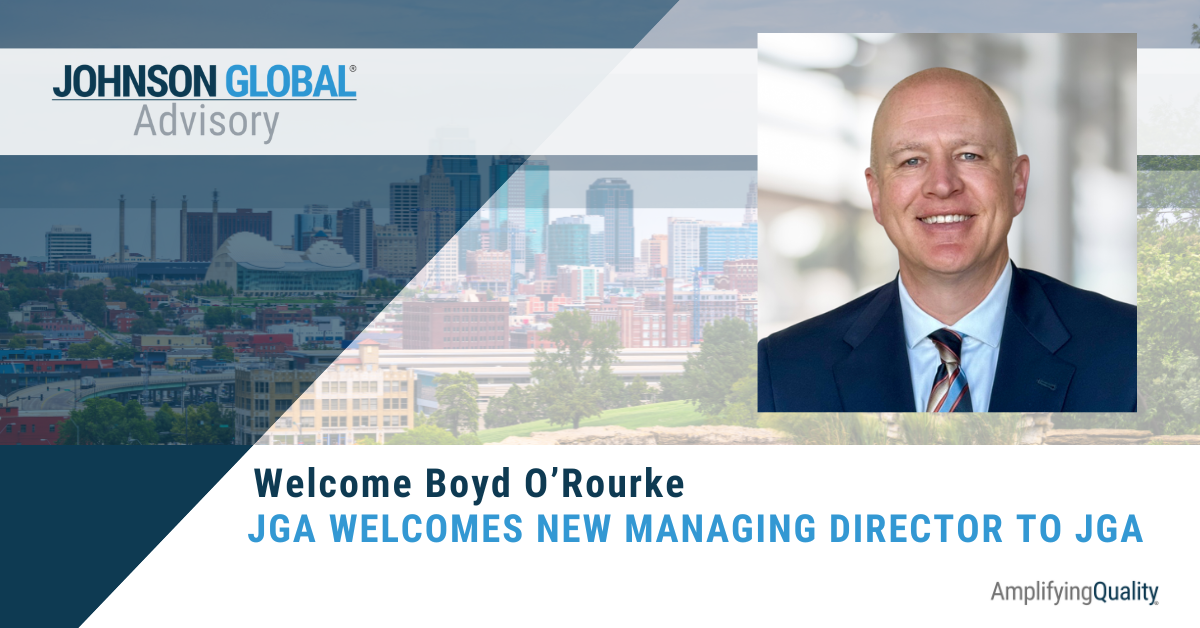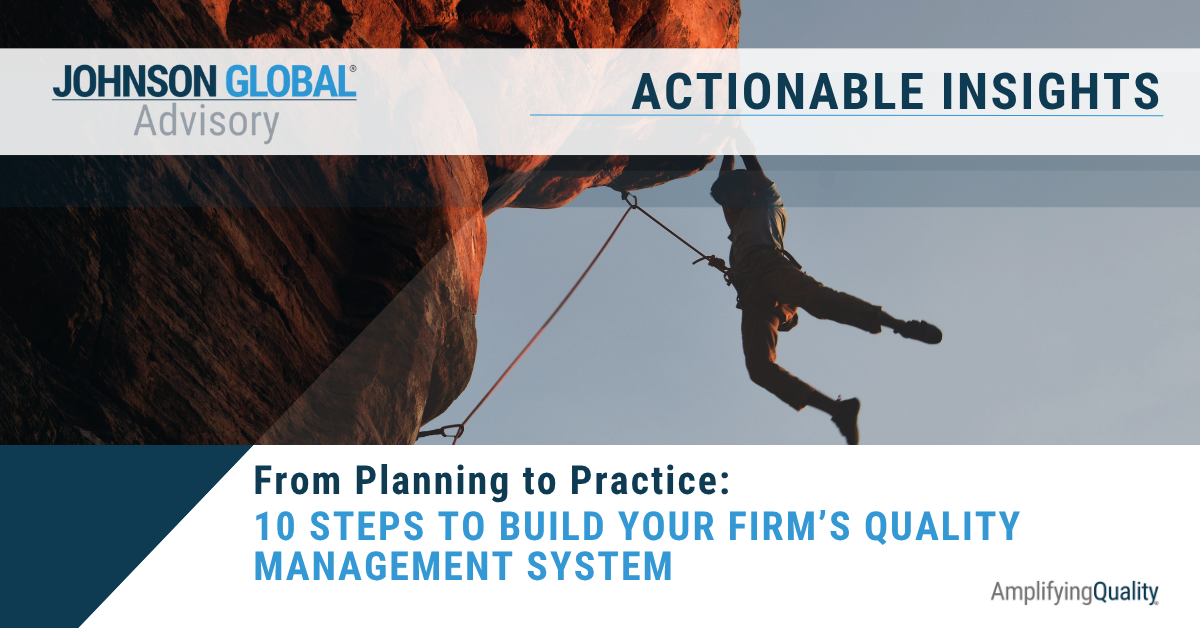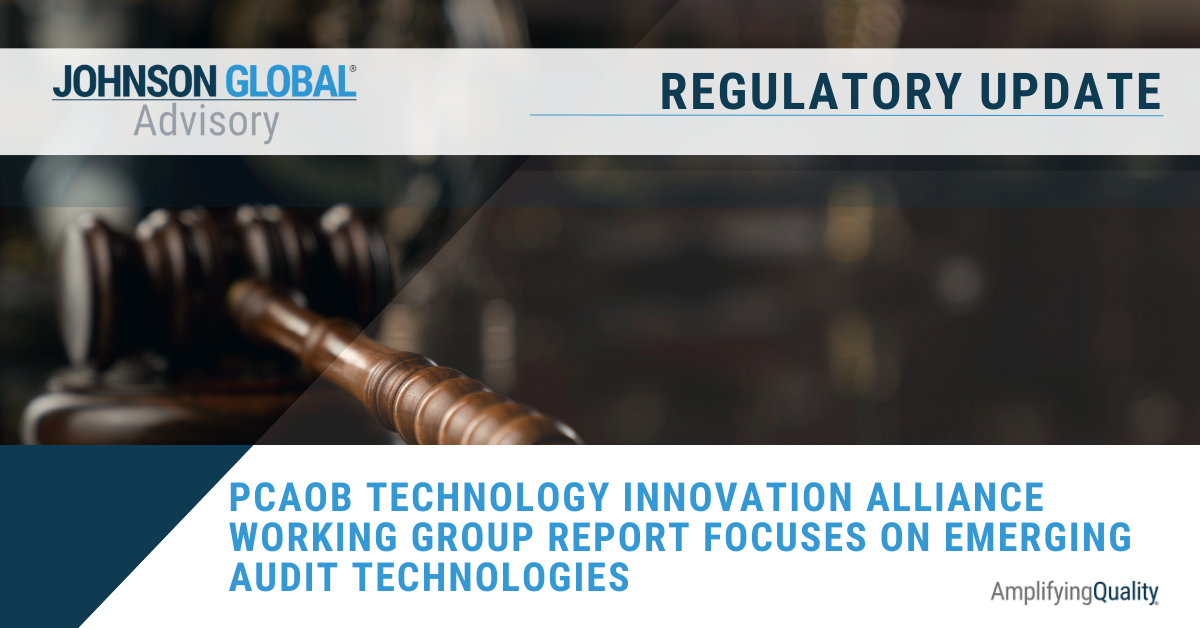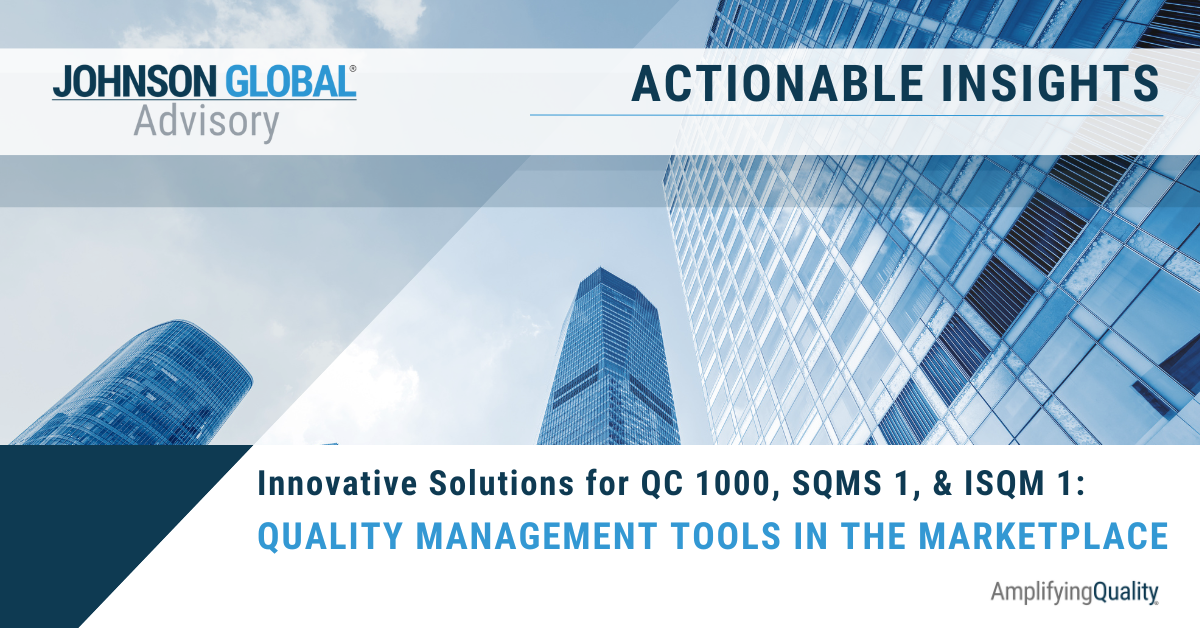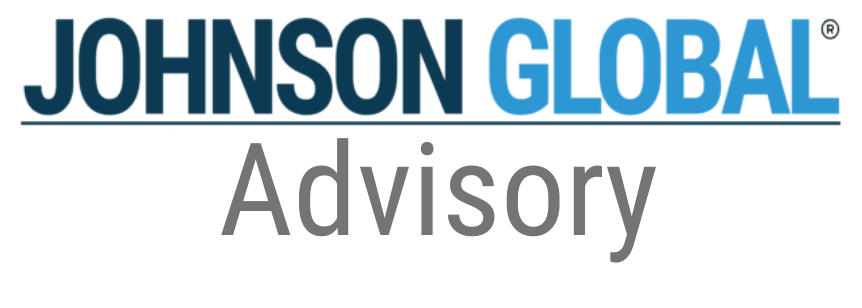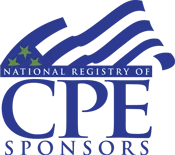ISQM 1 and SQMS 1: Influencing the Firm on the Benefits Beyond Compliance (Part I)

Compliance is definitely the main driver of the new System of Quality Management (SQM) standards issued by the IAASB or the drafted standards from AICPA and the PCAOB. There is no disputing that. However, for the early adopters, what we are finding is that there are immense amounts of business value that come out of this process; more if you actually start the process with business value in mind. Given that firms are all in various stages preparing for the go-live date of controls operating on December 15, 2022, we thought it would be helpful to lay out the strategic value drivers from this compliance exercise.
Related: See a breakdown of the various implementation dates here.
SQM implementation requires firms to take a closer look at their internal process; every process that touches the value chain of getting an audit done.
To demonstrate the reach of this requirement, consider these examples:
- Employee onboarding, training, and retention;
- Software audit tools and technology used to monitor internal aspects like independence, or tools used by engagement teams to test 100 percent of smart contracts or select journal entries to examine for fraud;
- Archiving of binders on time, and in compliance with audit documentation requirements; or
- Monitoring programs that identify and fix deficiencies in both audit performance and the underlying functions supporting audit performance.
One thing is certain as we embark on this journey with our clients leading the SQM charge – the project is a significant investment in time and resources. Since procuring buy-in from the entire firm is important to a successful implementation, how do we get firm leadership and everyone that is part of the SQM onboard? It’s important for everyone to commit to the goals and understand the benefits of digging deep into component processes. Getting all these individual priorities aligned can be the toughest task to initiate on the right foot.
We have heard the experiences of SQM project implementation leaders struggling to get the buy-in needed from all the various stakeholders. And we have heard leadership at firms across the world ask:
“What’s in it for us?”
“All this investment just for a compliance exercise?”
“Why do I need to be involved in something the audit group has to do?”
And the best question we’ve heard:
“How can the system of quality management implementation improve our business?”
We have seen that our work in this area results in meaningful improvements to the way the business of audit and assurance is conducted, and many of these improvements will have benefits that reach across other practices of the firm.
Goals are aligned throughout the organization.
Getting the buy-in from the partnership board down to process owners. Goals that are specific and measurable (e.g. documenting the current process and eventually operating controls consistently and on time). The firm’s tone-at-the-top helps get everyone on the same page. Management’s role is to get the rest of the firm to understand why this is important. For example:
- Lay out the long-term benefits of improved business performance, reduced risks, more timely and accurate data in the firm to make sound decisions;
- Emphasize the long-term benefits of overall reduced costs over non-compliance with network, firm, peer review, and regulators; and
- Determine the potential for lower costs to insurance upon implementation and over time.
In addition, when firms can use key metrics to identify issues within the SQM and know how to solve them, this can lead to employee retention, a consistent or even reduced workload, and less burnout. Articulating and demonstrating the direct positive effect on a firm’s people takes time to nurture, especially for people working in processes of the firm that are not exclusively tied to the assurance practice (Consulting, IT, HR).
Current processes are understood, sometimes for the first time.
Conducting interviews, gathering data, and documenting the process allows everyone to see how it currently works (or doesn’t work). When project leaders invite everyone involved in a process together in one room, open discussions start to strengthen cross-functional teams for a clear picture of how each process really works. For instance, these meetings often result in the realization that two (or more) people are doing the same tasks (inefficiency) or discovering that no one is performing an important review check (gap).
Controls and Processes are formalized, streamlined, and optimized.
Once the current process is understood (“As-Is”) and with the right people in the room, identification of areas where procedures can be more uniform or simplified happens quickly. We often find that processes can be improved without adding more controls. This control optimization effort incorporates standardization and normalization across the firm to benefit processes well beyond the audit practice. Conducting workshops and flowcharting the process allows us to see what risks are addressed and where the control gaps are identified with a plan to close them.
A sound control environment will bring new business insights and metrics to make confident decisions with reliable data.
The control optimization process will identify all the information used in the control environment (very similar concepts to the work auditors perform with their clients as described here). This information can be used in new ways to help process owners and firm leadership make decisions. Firms can develop key quality metrics that can be used to measure and improve audit quality (i.e., metrics related to workloads, the number of audit staff to partners, realization of audits, chargeable hours managed by partner, average hours of training per audit professional, etc.). When a system is used to monitor the SQM environment, these insights will allow for interim monitoring, enabling firms to quickly make decisions that address anomalies or negative trends as they arise.
Getting started early begins with:
- Firm leadership understanding how a consistent and well-monitored SQM can improve the business;
- All firm personnel understanding how their roles contribute to the SQM;
- Aligning objectives and goals for all firm personnel based on their role within the SQM; and
- Persuading all firm personnel to see how a commitment to their objectives and goals contributes to the benefits the firm can realize from having an effective SQM.
While compliance may be the hand forcing you forward, the upside to this “exercise” is that undoubtedly you will be a stronger, more efficient firm when executed correctly. Firms that begin with such a mindset seem to be more successful throughout the process.
Jackson Johnson, CPA is president of Johnson Global Accountancy, a public accounting and consulting firm with clients throughout the world. He works directly with PCAOB-registered accounting firms and other firms to help them identify, develop, and implement opportunities to improve audit quality.. He also works with public and private companies on various technical accounting and transactional matters. His experience includes nearly six years with the PCAOB, where he worked with small and medium-sized accounting firms throughout the world, including foreign affiliates of large international accounting firms, in the areas of firm quality control and ICFR audits of financial statements. Prior to the PCAOB, Johnson worked with public and private clients in a variety of industries at Grant Thornton LLP in Boston, Los Angeles, and Hong Kong.

